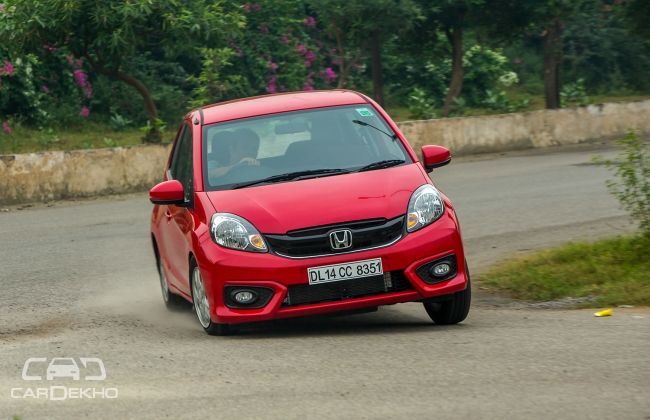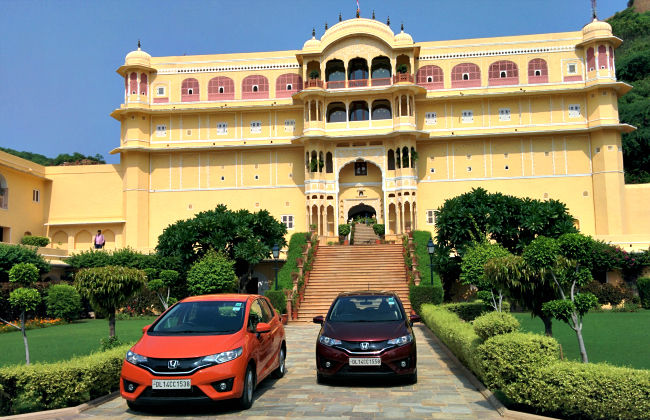Some May Not Love Honda BR-V, Here's Why
Modified On Oct 28, 2015 07:05 PM By Manish
- 1 Comments
- Write a comment
- Another facelifted, put-together job by a mass-producing automaker
- Automaker finally gives-in to what seems to be the standardised formula for success in the country with its entry in the compact SUV segment
- A blatant disregard for creativity
- Bits and pieces have been sourced from Civic/Jazz, while only incorporating subtle changes
Now here’s the thing about Japanese cars, they are brilliant fun, they are as reliable as death and taxes and night and day, but when it comes down to that intangible connection between a man and his machine, they more often than not, fail miserably. Every single car that comes out wearing a badge of any automaker from this particular island nation is drenched in a thick coat of mass production grime. The cars might exude unparalleled performance, attention to detail and quality, but it is seldom that they do not reflect capitalism and consumerism.
These are one of the reasons why most of the Japanese automakers have failed to make an impression on their consumer base, even when they attempted to put forth an exclusive incarnation of their brand. Examples of such solid efforts include premium brands like Lexus, Infiniti and our very own Nexa, which even after its much-hyped arrival, failed to gain any traction with the public. This was the general perspective that we stuck to when we were introduced to Honda’s upcoming offering, the BR-V.

The car finds its foundations in the Brio hatchback and one can, if they pay compulsive attention, find certain design cues that are also reminiscent of the Mobilio MPV. So another facelifted, put-together job by a mass-producing automaker? And that's exactly what we thought, which is why we dwelled even deeper into the car, to back our hypothesis. The car is Honda’s attempt at cracking into the compact SUV segment of the country, which in itself proves that the automaker has finally given-in to what seems to be the standardised formula for success in the country.
One might validate their actions by pointing out that this might not matter as long as the product is up to the mark, but they would also have to understand that the company in question has been responsible for defying the general consensus and sticking to its guns when it comes to innovations. There is an abundance of such examples like- the Honda Insight, or the Civic Type-R, so why give up on your philosophy now Honda and not stand out of the herd, rather than be a part of it. Yes, BR-V does come with seven-seats, but don't just break out confetti just yet, remember so does Maruti Ertiga, Mahindra Scorpio, TUV300 and Tata Safari.

Let's talk about the exteriors, shall we? Well, the BR-V doesn’t actually feature a look that is reminiscent to the Brio family, but a brand new design, entirely. By the looks of it, this will do the same for Honda, what the second generation of its CR-V SUV did for the company, all those years ago.

Honda has redesigned the dashboard, which has been picked out of Civic/Jazz to incorporate subtle changes hoping it will get away with it. Even the premium looking instrumentation cluster with a larger MID (Multi-Information Display) screen has been borrowed from the City. All of these actions have been taken to keep the car prices competitive and it is quite understandable but think about it, there is a hoard of examples why automakers have come up with offerings that were beyond their capabilities only to make sure that they create something for the world, which sets a benchmark for automakers to follow in the coming years. What’s even more mind-boggling is that this approach is not only exclusive to cars manufactured by elitist automakers like Bugatti, which manufactures its car at twice the cost of what it eventually sells them for!
The same approach can also be seen in new contenders entering the market like Renault did with its Kwid. These automakers decided to create something and willed it into existence, thrashing the barriers of sense and sensibility. Even if the automakers weren’t rewarded, the world was because of their exceptional offering. So as we stand on the edge of this automotive revolution, we must question our judgement as automotive enthusiasts and ask ourselves, how can we stand by and support this blatant disregard for creativity?

This doesn’t mean that the car still won’t be a probable success because the masses relish the simple pleasures of convenience, continuity and routine. In this particular case, ignorance is a bliss and if Honda undercuts the prices of its competitors just enough, courtesy of recycled parts, then there is a chance that it will be a huge success in the country, even at the cost of ingenuity, I mean take a look at all the people on Facebook and that company turned out pretty well, didn’t it!












